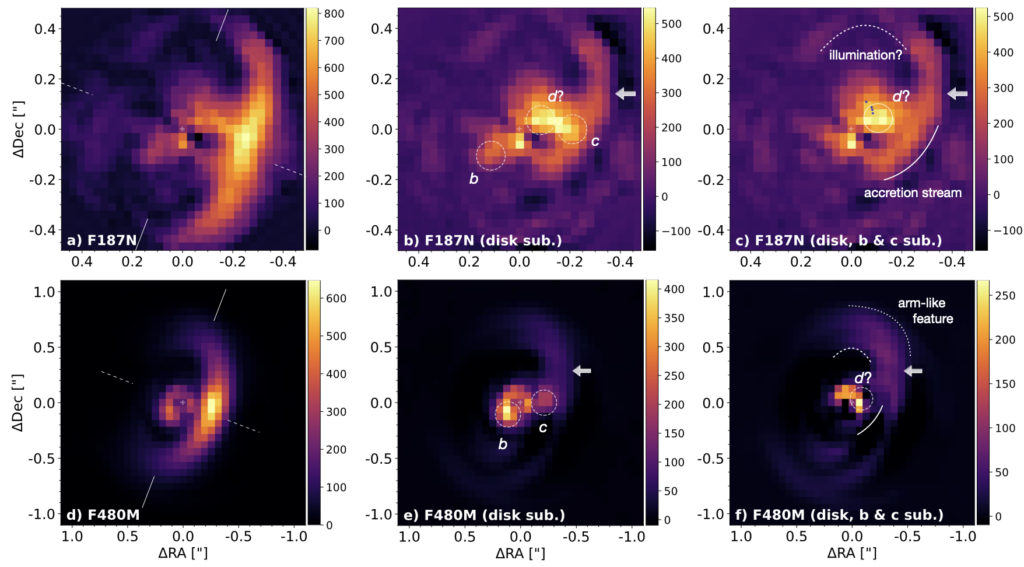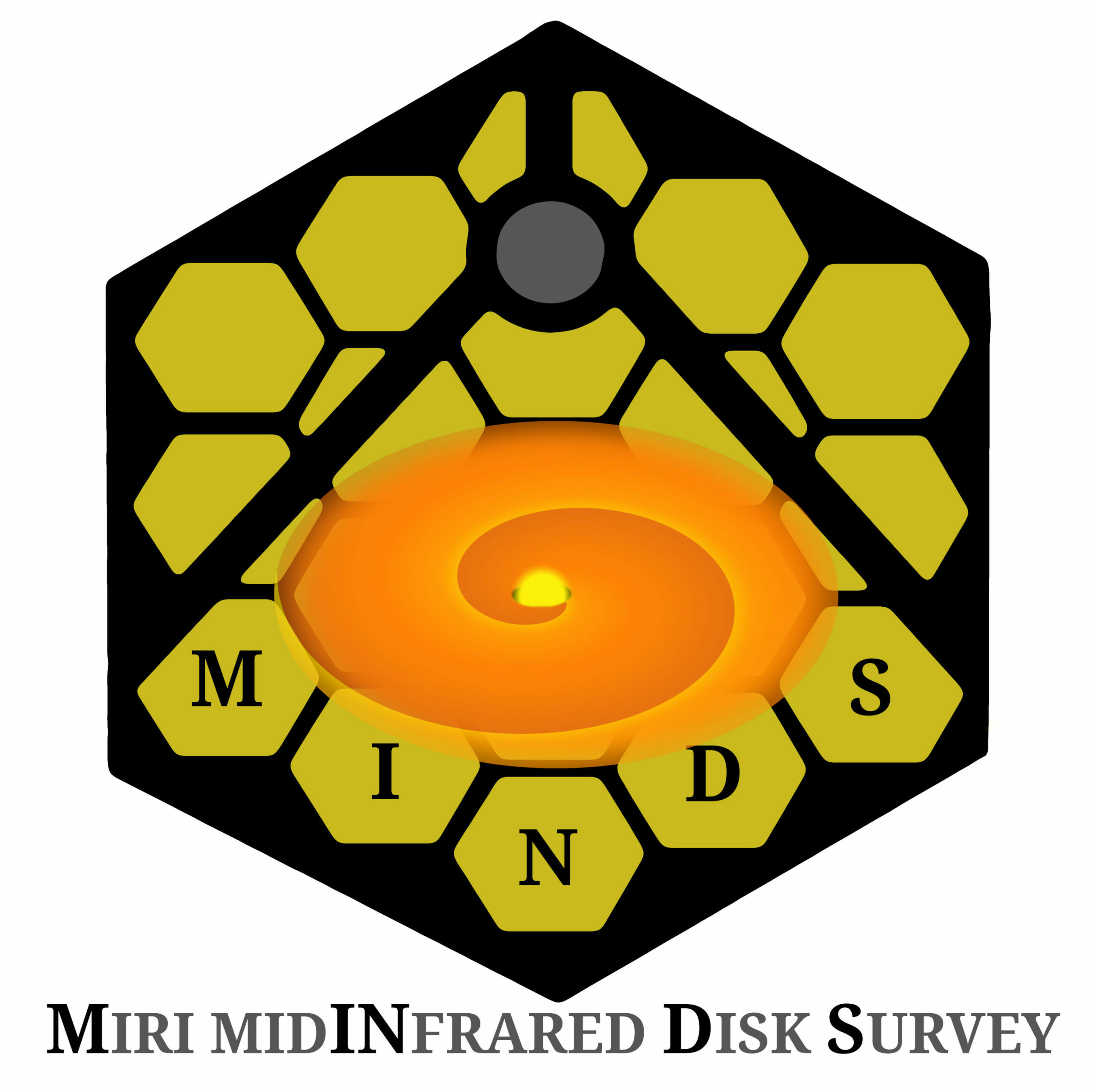
and third columns show the images obtained after subtraction of our outer disk model, and further subtraction of protoplanets b and c, respectively. Major and minor axes of the disk are indicated with solid and dashed lines, respectively, in the first column. Dashed circles indicate the predicted location for protoplanets b and c based on the orbital fits in Wang et al. (2021b), and for candidate d based on the orbit suggested in M19. The astrometric measurements for d (blue dots) are compared to our new estimated astrometry (solid circle) in panel c. Units are MJy sr−1.
Context. Two protoplanets have recently been discovered within the PDS 70 protoplanetary disk. JWST/NIRCam offers a unique opportunity to characterize them and their birth environment at wavelengths difficult to access from the ground. Aims. We aim to image the circumstellar environment of PDS 70 at 1.87 μm and 4.83 μm, assess the presence of Pa-α emission due to accretion onto the protoplanets, and probe any IR excess indicative of heated circumplanetary material. Methods. We obtain non-coronagraphic JWST/NIRCam images of PDS 70 within the MINDS (MIRI mid-INfrared Disk Survey) program. We leverage the Vortex Image Processing (VIP) package for data reduction, and develop dedicated routines for optimal stellar PSF subtraction, unbiased imaging of the disk, and protoplanet flux measurement in this type of dataset. A radiative transfer model of the disk is used to disentangle the contributions from the disk and the protoplanets. Results. We re-detect both protoplanets and identify extended emission after subtracting a disk model, including a large-scale spiral-like feature. We interpret its signal in the direct vicinity of planet c as tracing the accretion stream feeding its circumplanetary disk, while the outer part of the feature may rather reflect asymmetric illumination of the outer disk. We also report a bright signal consistent with a previously proposed protoplanet candidate enshrouded in dust, near the 1:2:4 mean-motion resonance with planets b and c. The 1.87 μm flux of planet b is consistent with atmospheric model predictions, but not that of planet c. We discuss potential origins for this discrepancy, including significant Pa-α line emission. The 4.83 μm fluxes of planets b and c suggest enshrouding dust or heated CO emission from their circumplanetary environment.
Scientific article:
MINDS: JWST/NIRCam imaging of the protoplanetary disk PDS 70By: V. Christiaens et al. [original,preprint]
